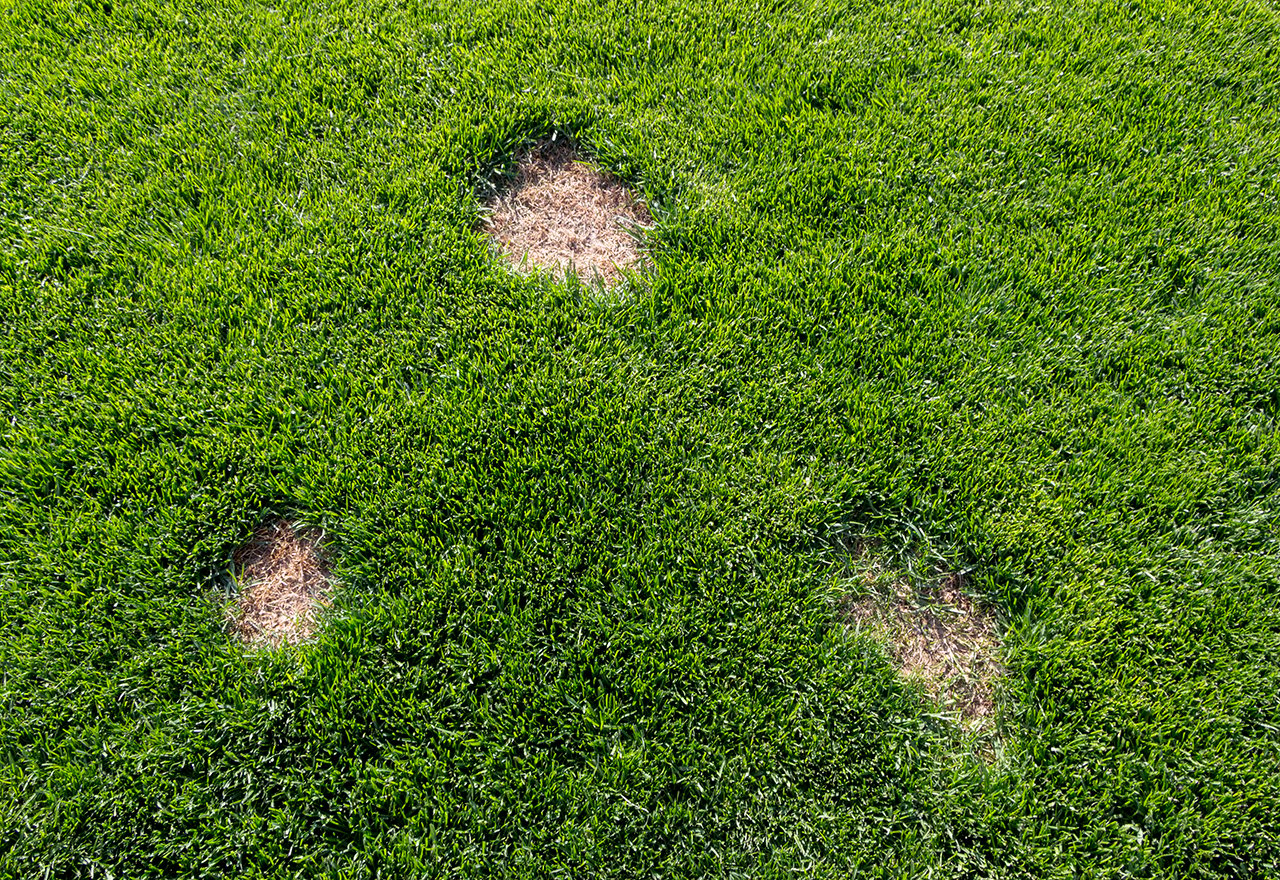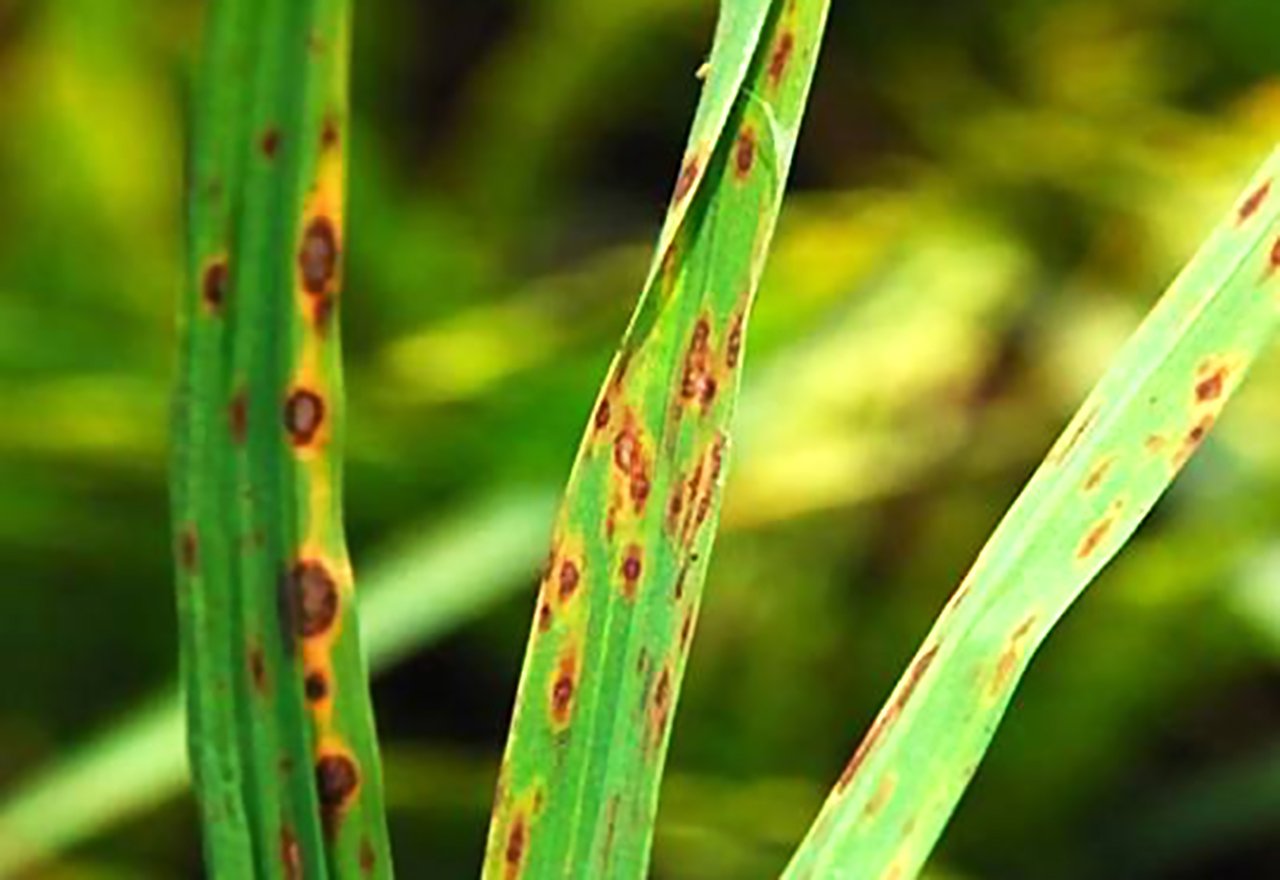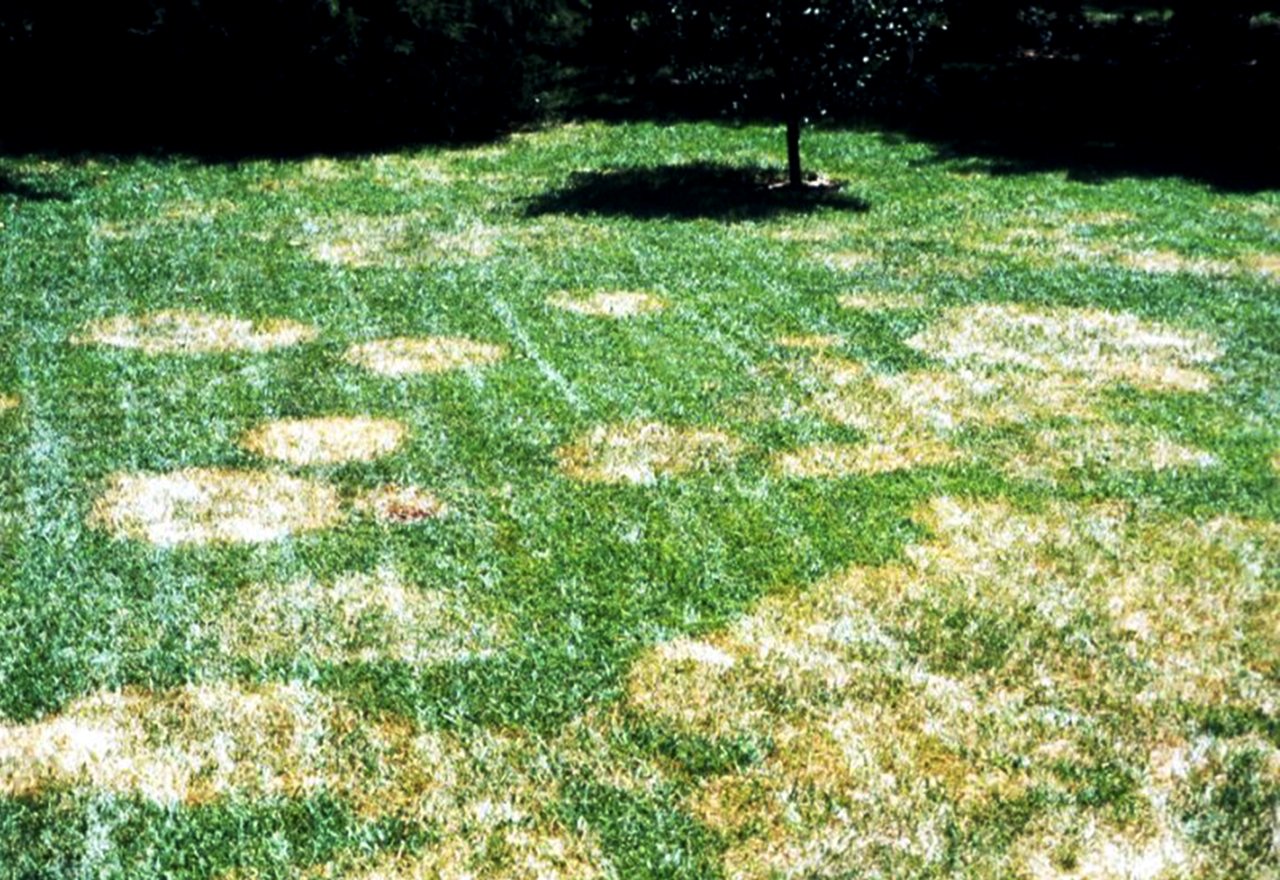Irregularly Shaped Brown Areas in the Lawn Caused by a Fungal Disease

Brown Patch is a common lawn disease that arises due to a fungal organism called Rhizoctonia Solani. The fungus can infect a wide variety of grass types, but most commonly victimizes Perennial Ryegrass and Tall Fescue. Other grasses, such as Kentucky Bluegrass, Bentgrass and Zoysiagrass are susceptible to Brown Patch Disease, however, the damage is usually minimal in these species. Infected lawns will present with circular or irregularly shaped areas of brown or dead grass, 6 inches to several feet in diameter. The affected grass blades typically remain upright, and upon closer inspection, show irregular tan lesions with a dark brown border.
Rhizoctonia Solani, the pathogenic fungus that causes Brown Patch Disease, may be present in the soil for months or even years before it manifests as brown patches in your lawn. This fungus may be spread by other plants and is easily transmitted through water. Condensation on your lawn, in the form of dew, mist, or rain, can contribute to the rise of Brown Patch. While there are no airborne spores, the fungus can be circulated by dust particles.
Brown Patch Disease thrives when the weather is hot and the humidity is high. Symptoms will be noticeable from the middle to the end of Summer. Additional factors that can increase the likelihood of Brown Patch Disease are compacted soils, poor soil drainage, excessive thatch and an over abundance of excessive nitrogen. On a positive note, Brown Patch is a foliar disease, meaning it causes harm to the grass blades, but not to the crown of the plant, or to the root system. Most lawns recover from Brown Patch Disease when the weather cools in the Fall.

Some of the conditions that are conducive to brown patch are beyond the homeowner's control. Air temperatures and humidity levels may cause a lawn to develop brown patch no matter what a homeowner does. But you can minimize the chances for a brown patch with a good lawn care regimen.
